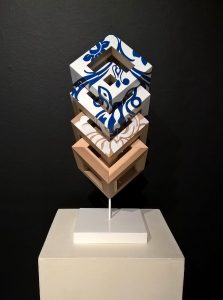November 20 – January 31, 2021 | Rusty Scruby: Cube Network
Please use this link to see the video of the virtual opening with Rusty Scruby. He interacted with viewers as he showed us and talked about his work. This opening will not be an in-person event due to the New Mexico DoH order as of November 13, 2020.
Harmonies, resonance, dissonance, pattern. These are the guiding principles in Rusty Scruby’s art and life. Scruby was mesmerized in his youth by numerical oddities such as pi, and counting the number of steps to school and between classes. As an adult, he continues to strive for a deeper understanding of the universe through both unseen and ubiquitous mathematical relationships. This love of numbers is a way to distill what is around him. He says, “I was obsessed with taking the physical world and mapping it out in my head.” Scruby transcribes his inner world, brimming with numerical relationships, into two- and three-dimensional pieces that have a lyrical presence. He translates the simple patterns of everyday life into complex and immersive mixed media constructions filled with both meaning and beauty. In essence, Scruby is a magician, conjuring up a new way to see the world.
View the works in the exhibition here.
Online Virtual Exhibition | Keep the Ball Rolling
Walk through our VR exhibition!
Adaptability is key to finding happiness, and Turner Carroll has adapted to a new way of hosting exhibitions to bring you happiness during this unusual, homebound time. We are thrilled to bring you our first 3-D, interactive, virtual exhibition. Our exhibition Keep the Ball Rolling takes its title from Judy Chicago’s Resolutions series work by the same name. The exhibition features vibrant works that inspire mind, body, and heart. Please enjoy our guided tour feature, which allows us to walk you through the exhibition as if we’re walking through the gallery together. You can also click on the View/Purchase on our Website button next to each artwork, to read our descriptive analysis of the specific artwork. Enjoy the exhibition and please send us your comments and suggestions on our new platform, at info@turnercarrollgallery.com.
View the works in the exhibition on our web page here.
Shawn Smith and Rusty Scruby in the News

Shawn Smith and Rusty Scruby News in Abilene Reposter for Exhibition “Art + Science = Wonder” exhibition at The Grace Museum
Turner Carroll artists Shawn Smith and Rusty Scruby are in the news for their exhibition “Deliberate Distraction” at The Grace Museum. The museum’s web site and press download states wonderfully and succinctly “The common misconception that art and science are so vastly different, that they never overlap, is discredited by two contemporary artists, Rusty Scruby and Shawn Smith, whose work proves that the union of these two disciplines, like the brain’s neuropathways between our right (artistic) and left (analytical) hemispheres, is the sweet spot known as creativity.”
The Abilene Reporter News story quotes Smith “My work investigates the slippery intersection between the digital world and reality. Specifically, I am interested in how we experience nature through technology.” He goes on to further state that “I am interested in how each pixel plays an important role in the identity of the object, the same way each cell plays a crucial role in the identity of an organism.” Well done.
31 July 2018
June 22 – July 9, 2018 | Science as Art: Shawn Smith, Rusty Scruby, and Matthew Shlian
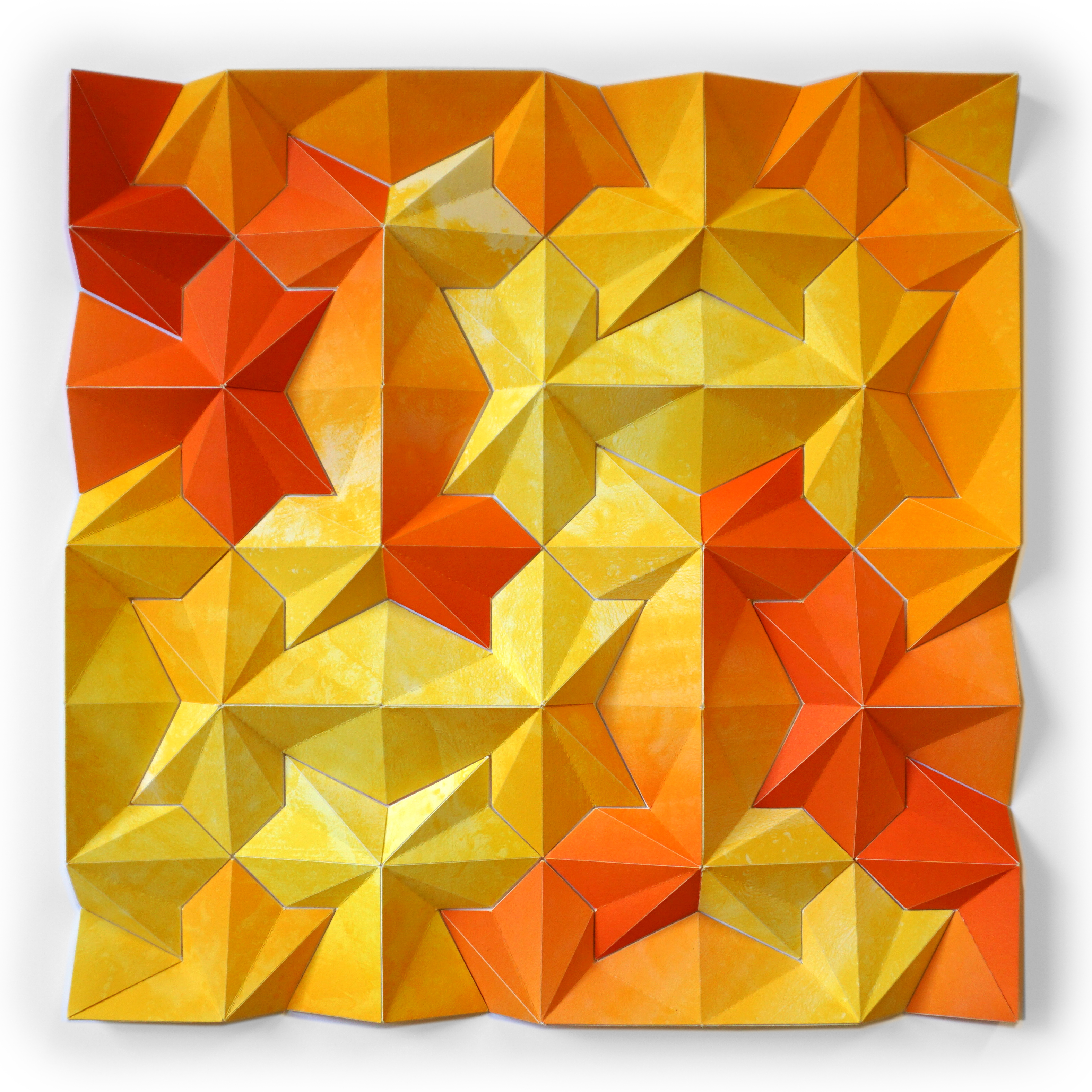
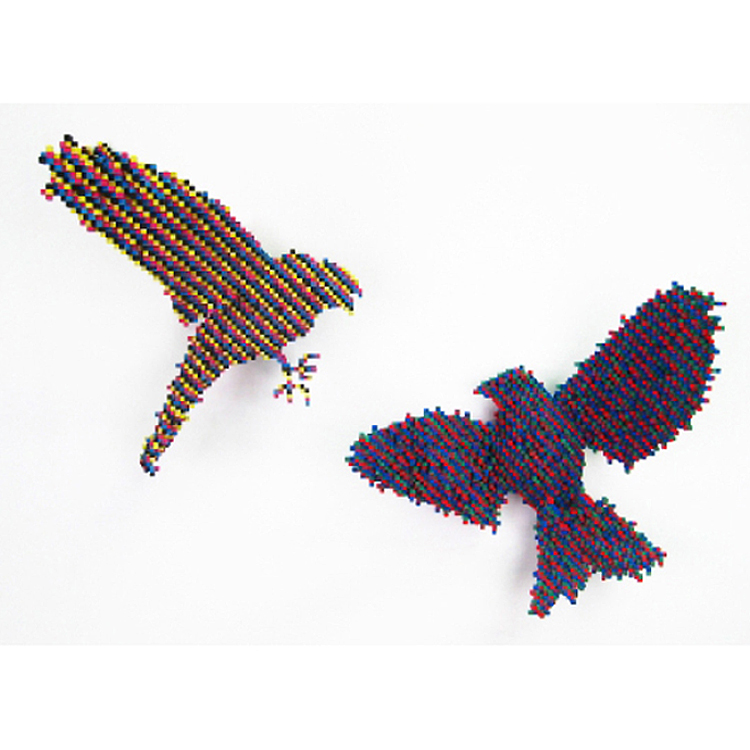
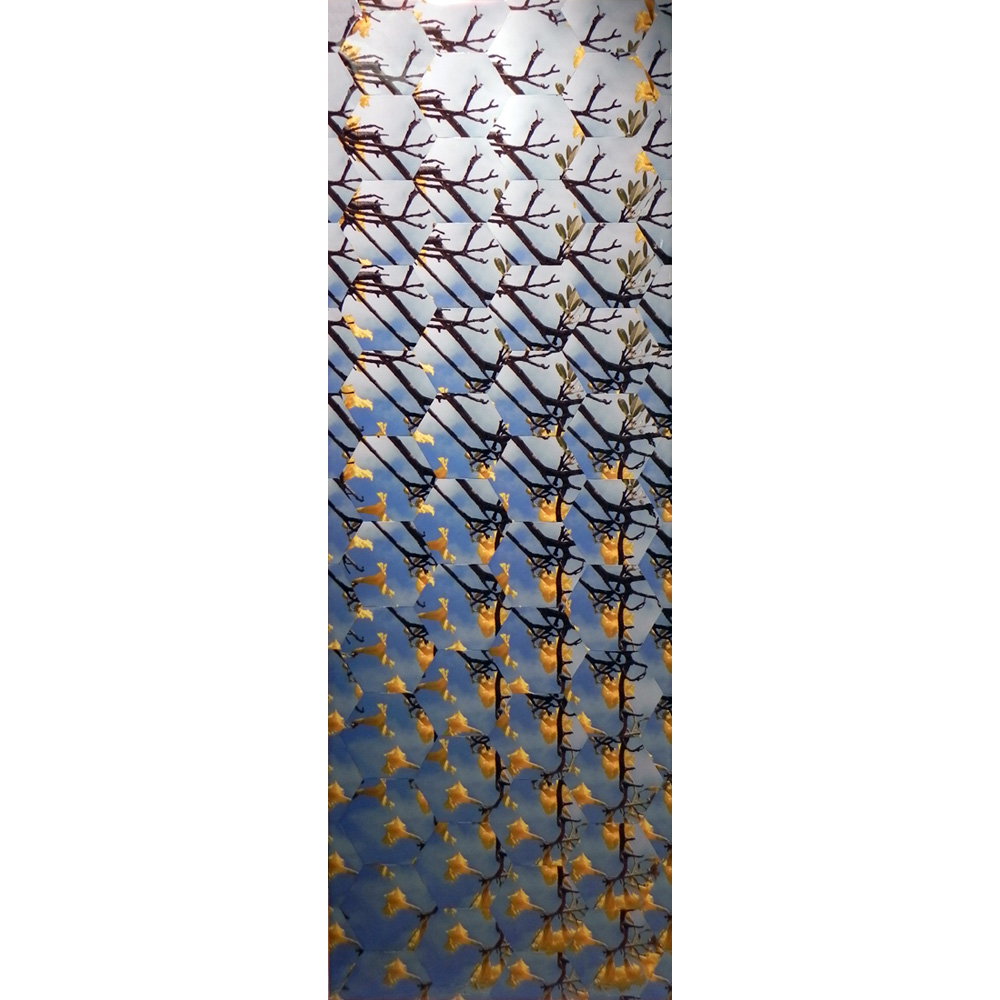
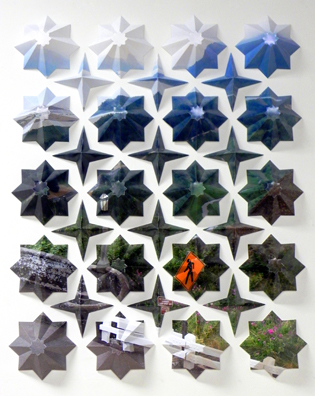
Opening Reception Friday, June 22, 5-7pm
In conjunction with Smith and Scruby’s exhibition at Grace Museum in Texas, and Matthew Shlian’s Frederick Hammersley Residency and Wonder Cabinet at Tamarind Institute.
“After a certain high level of technical skill is achieved, science and art tend to coalesce in esthetics, plasticity, and form. The greatest scientists are artists as well.” Albert Einstein
The realms of science and art are often considered mutually exclusive; the right hemisphere of the brain is thought to control our artistic and creative abilities, while the left our mathematical and logical skills; science is viewed as linear and precise, whereas art is accepted as open to individual interpretation. However, in Turner Carroll Gallery’s exhibition, Science as Art, artists Shawn Smith, Rusty Scruby, and Matthew Shlian explore the intersectionality between science and art, using their works to deconstruct the categorizations generally used to dichotomize the two subjects. Here, science is used as a medium in the same way as paint or plaster, touching on subjects such as technology, mathematical relationships, and the natural world in a way that uses scientific principles and processes to evoke aesthetic beauty and provoke audience response within the various pieces.
Work in the exhibition may be viewed here.
For more information and high resolution images, please visit https://turnercarrollgallery.com/press-area/ or info@turnercarrollgallery.com
Flatlanders & Surface Dwellers
April 14 – 17, 2016 | Turner Carroll at the Dallas Art Fair
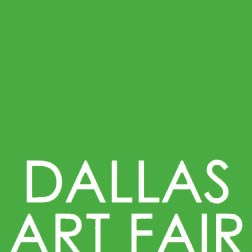
Dallas Art Fair
Located at the Fashion Industry Gallery, adjacent to the Dallas Museum of Art in the revitalized downtown arts district. Featuring new works by gallery artists Fausto Fernandez, Hung Liu, Squeak Carnwath, Drew Tal, Jamie Brunson, Rusty Scruby, Edward Lentsch, Wanxin Zhang, Suzanne Sbarge, Karen Yank, Scott Greene, Holly Roberts, and more! Fair hours are Friday and Saturday, April 15 and 16 respectively, from 11am to 7pm, and Sunday, April 17 from 12pm to 6pm, with an opening preview gala Thursday, April 14.
A link to the Dallas Art Fair is here.
March 1, 2013 | Flatlanders & Surface Dwellers
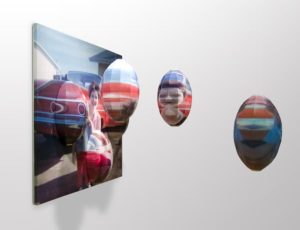
Rusty Scruby – New Car
Flatlanders & Surface Dwellers is a group exhibition featuring diverse visual art media that explore the intimate and exotic realm of surface texture which evokes visceral, multi-sensory responses. Throughout the history of art making, the artist’s relationship with surface has been a serious consideration. Renaissance artists, striving for illusion, expected the viewer to ignore the surface. Modernists embraced the surface and made it a primary consideration. Postmodernity does whatever it feels like with surface. Now, the digital revolution has allowed viewers to “interact with” the surfaces of gadgets; but still, an illusion is all that is ultimately permitted. This leaves the curious soul of the viewer with the desire to touch, connect, cut, penetrate, peel away and expose layers. As artists, we are aware that surface is ours to manipulate, whether it is a mask of superficiality, a final layer of honesty or a cloak of mystery. The book Flatland, written in 1884 by Edwin A. Abbott, is loosely referenced in the exhibition, as it provides a philosophical look at a two-dimensional world, exploring abstract concepts of shape, line and point, and highlighting “a world within the surface.” This exhibition is curated by Lea Anderson, and artists were selected by both invitation and a call for submissions.
View Entire Article
Heroes Exhibition and Construct Reviews

Rusty Scruby – Construct in Colorado Creates
We’ve gotten some very good write-ups lately. Kate Petley and Rusty Scruby’s current exhibition Construct was written up by Leanne Goebel in Colorado Creates. Also, we received a great review of the Hung Liu, Deborah Oropallo and Squeak Carnwath show Heroes in Art Ltd. It’s a great issue of a great magazine and has lots of coverage of Santa Fe and Albuquerque in the July/August issue.
A copy of the Art Ltd. review may be downloaded here.
Construct: Rusty Scruby & Kate Petley on the Front Cover of the Jun 15, 2012 Santa Fe New Mexican: Pasatiempo
We open a fabulous show tonight, Construct. Featuring Kate Petley and Rusty Scruby, this exhibition examines two dynamic and unique artists working with complex and immersive two-and three-dimensional visual planes. Both artists rearrange the obvious to create intra-artwork relationships. In a way their artwork collaborates with itself through the practice of layering. To stand in front of Kate’s and Rusty’s work is like looking through a bug’s eye and simultaneously seeing forever.
Dec 7, 2011 | SCOPE Miami 2011 Wrap Up
Wow. We had an absolutely stellar fair this year at Scope Miami. Many works by Hung Liu, Eric Zener, Rusty Scruby, Kate Petley and Jenny Abell found collections, including two institutional collections. The atmosphere was electric at Scope this year with thousands of attendees and loads of press. The link to a blog mentioning us is here. Thanks, Miami!
Reconstructed–Sights and Sounds of a Modern-day Weaver
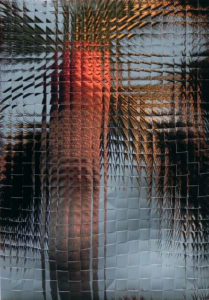
Reconstructed- Sights and Sounds of a Modern-day Weaver
Reconstructed- Sights and Sounds of a Modern-day Weaver
by Cris Worley
What inspires Dallas-based artist, Rusty Scruby, is only a fraction of his highly complex, engineering-based process of creating. “I want to see pattern the way we hear pattern in music,” says Scruby. A former student of both aerospace engineering and music composition, Scruby manifests these skills into his work, producing a sleek and intricate harmony of math and music.
Starting with a simple snapshot, Scruby makes thousands of identical inkjet prints. Based on the type of construction he wishes to create – a flat or undulating surface, a helix, he crops out and cuts certain images into precise “facets” which are engineered to interlock perfectly with one another. By interlocking these small pieces of paper, Scruby “weaves” the form much like one would weave knit fabric. This technique derives from a curious and longstanding-history of knitters in the artist’s family.
Pattern is the foundation of the work, both conceptually and visually. Initially, the viewer witnesses an orderly montage of a single image in replicate, each segment slightly varied from the one before. But the result is not straightforward, to say the least. With a little more time spent viewing these pieces, these patterns give way to a deeper understanding of the universal laws of science and mathematics. Like complexity theory, which studies the relationship between pattern and randomness, and like the combined frequencies of sound in music, Scruby’s mathematical inspirations seek to show the tension between the whole and the sum of its parts, between the original image and the constructed one.
While past works have revolved primarily around nostalgic childhood photographs, recent subject matter includes innocuous images of railroad crossings, traffic signs, meadows and fields of flowers. These quiet, even mundane themes burst into multifaceted, rhythmic schemes, creating haunting memories of the past and altered views of reality.
In the foreground of what would be a humble, urban landscape we see in Railroad Crossing, a large traffic sign deconstructed into several microcosmic components. While we recognize the sign to indicate a railroad crossing this visual schism does not reflect its true identity. Herein lies the essence of the work-the comparison between reality and that which comprises it. In this work, Scruby takes his concepts one step further. By weaving the surface into an undulating form he adds another instrument to his visual symphony, underpinning even more his ideas of “visual music” and sound waves.
Rusty Scruby recognizes the small, unseen parts of reality, which many of us do not even know exist. By bringing them to a visual realm he shows the viewer a new way of looking, even a new dimension.
Art Scene – Rusty Scruby – 15 JANUARY 2011
Starting with snapshots from the family album, the artist’s own photographs, prints, drawings, or even plain paper, the images and materials are duplicated from scores to hundreds of times. The product of this is cut, then woven together to create tessellated patterns evocative of everything from a fly’s eye view to the cadence of ocean waves tempered by coral reefs. The less literal source material displays Scruby’s transformation of form to metaphor to best effect. “Reef,” an eight-foot long construction made of interlocking clear and white report covers, transforms at a distance into rain-dappled amethyst waters that segue into white sandy beaches; “Disturbance” weaves together sheets of plain white paper into undulations reminiscent of still waters rippled by a tossed stone.
For the works that are sourced from Scruby’s childhood photos, fractions of images draw the viewer close to search for clues found in the conventions of photographic representation, then quickly pushes us away, searching for a gestalt that can be woven together in the mind’s eye. In “Kwajalien”—the exhibition’s largest work at nearly fifteen feet long—we see the artist’s sister playing to the camera while the artist fades to a blurred cipher in the background. In “Aunti Dotti” Kodachrome colors dazzle while the work’s namesake’s staccato reiterations are read as pure pattern. In one sense moving in close and away becomes a dialog between Roland Barthes’ punctum, defined as the point in a photograph that draws us into the image and makes the work resonate, and Ferdinand de Saussure’s signified, what the representation manifests in our mind.
Scruby’s Goldberg variations of photographic assemblage in “On The Beach” shows the artist has honed his technique well while expanding the work’s the scope and play. Captured in the both the minor variations inherent in handcrafted work, and the intentional variation in the interlocking patterns are the forgotten details and reinvented moments of a long-past event. In “Kwajalien Rain” a flurry of windswept palms blows over the image of a home on the beach, calling to mind the force of nature—not as a threat—but a source of childhood wonder. While not precise in remembering, Scruby’s finished views are more poetic, thus trumping the mathematics that underpins the work.

